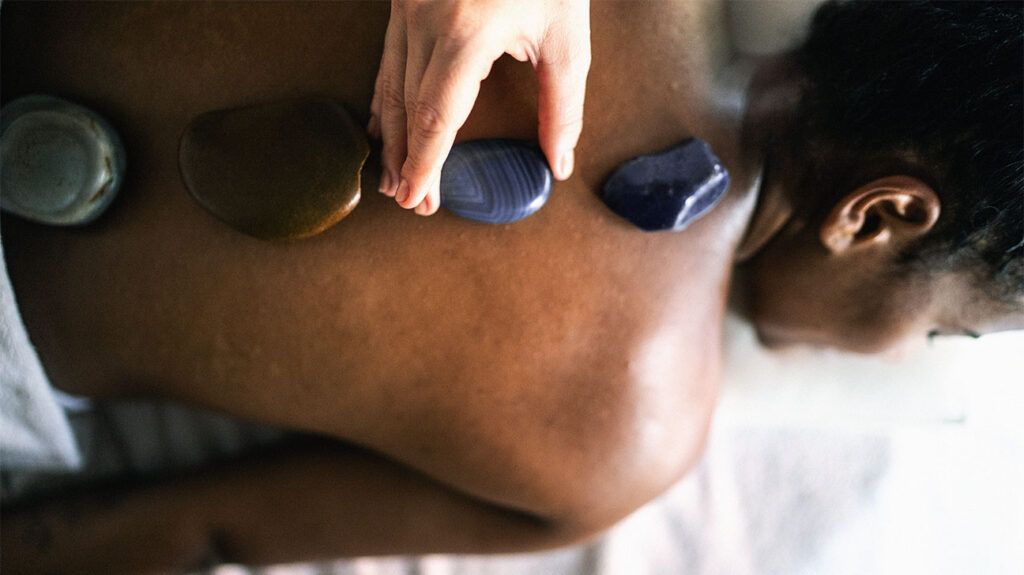Hot stone massage is a form of therapeutic massage in which a practitioner places warm stones on a person’s body or uses them to apply pressure to specific points.
Supporters of hot stone massage therapy claim that it can relieve stress, treat muscle soreness, and boost circulation. While some people may support these claims, research into the practice’s efficacy is limited.
In this article, we examine how hot stone massage therapy is carried out and the possible benefits and risks.

Unlike other forms of massage, which center on physical manipulation with the hands, hot stone massage uses hot, smooth stones to place pressure on or manipulate specific parts of the body.
The stones are smooth and flat and are usually made of volcanic rock called basalt. These particular stones are chosen because they retain heat.
The stones used for a hot stone massage are placed in hot water to warm up before being applied. They are then placed onto specific areas of the body, such as:
- the back
- the stomach
- the face
- the hands
- the feet
Some massage therapists hold the stones in their hands and use them to massage. This allows the therapist to get deeper into the muscles without more pressure, helping their client relax yet further.
Occasionally, cold stones can be used on the face or after the hot stones have been applied. Cold temperature helps to calm swollen blood vessels and soothe hot skin.
There is little scientific study into hot stone massage specifically. However, in terms of massage therapies as a whole, many
However, scientific reviews of
People may still find massages, such as hot stone therapies, to be a positive experience. Anecdotal benefits of hot stone massages can include:
- pain relief
- stress relief
- decreased muscle tension
- better sleep
- increased flexibility
Despite the many benefits associated with hot stone massage, it is not an appropriate therapy for everyone.
Some people should not have a massage, and more specifically, a hot stone massage.
For hot stone massage, some of the contraindications, or factors that mean a person should not have a particular treatment, are listed below.
Breaks in the skin
Anyone with injuries or breaks in the skin should avoid a hot stone massage until those injuries have healed.
Infection or illness
Someone with a fever may spread their germs, and they will have difficulty regulating their body temperature, as well. This will leave them feeling more uncomfortable when hot stones are put on their skin.
Heart disease
Heart disease can cause swelling or other problems in the veins or arteries of the legs, both of which can be negatively affected by a massage. A person should always tell the massage therapist about any health issues they have so that they can be aware of potential risks.
Pregnancy
Prenatal massage can be very relaxing and beneficial for many during pregnancy. However, some practitioners feel uncomfortable using hot stones on a pregnant person, and the heat and pressure of hot stone massage may not be suitable for all.
Even though hot stone massage is safe and effective for relaxation, some strategies will make it a better experience.
- People should only go to licensed and qualified practitioners. The spa/clinic should practice good hygiene and clean the stones appropriately.
- It is important for people to talk with the massage therapist. Clients need to let them know if the pressure is too hard, or too soft, or if the stones are too hot.
- If in doubt, a person should ask their doctor about any medical conditions that may interfere with having a massage, particularly a hot stone massage.
To get the best out of a hot stone massage, people need to be open with their massage therapist.
The massage therapist should be aware of any health conditions a client has that could affect how they perform the massage.


